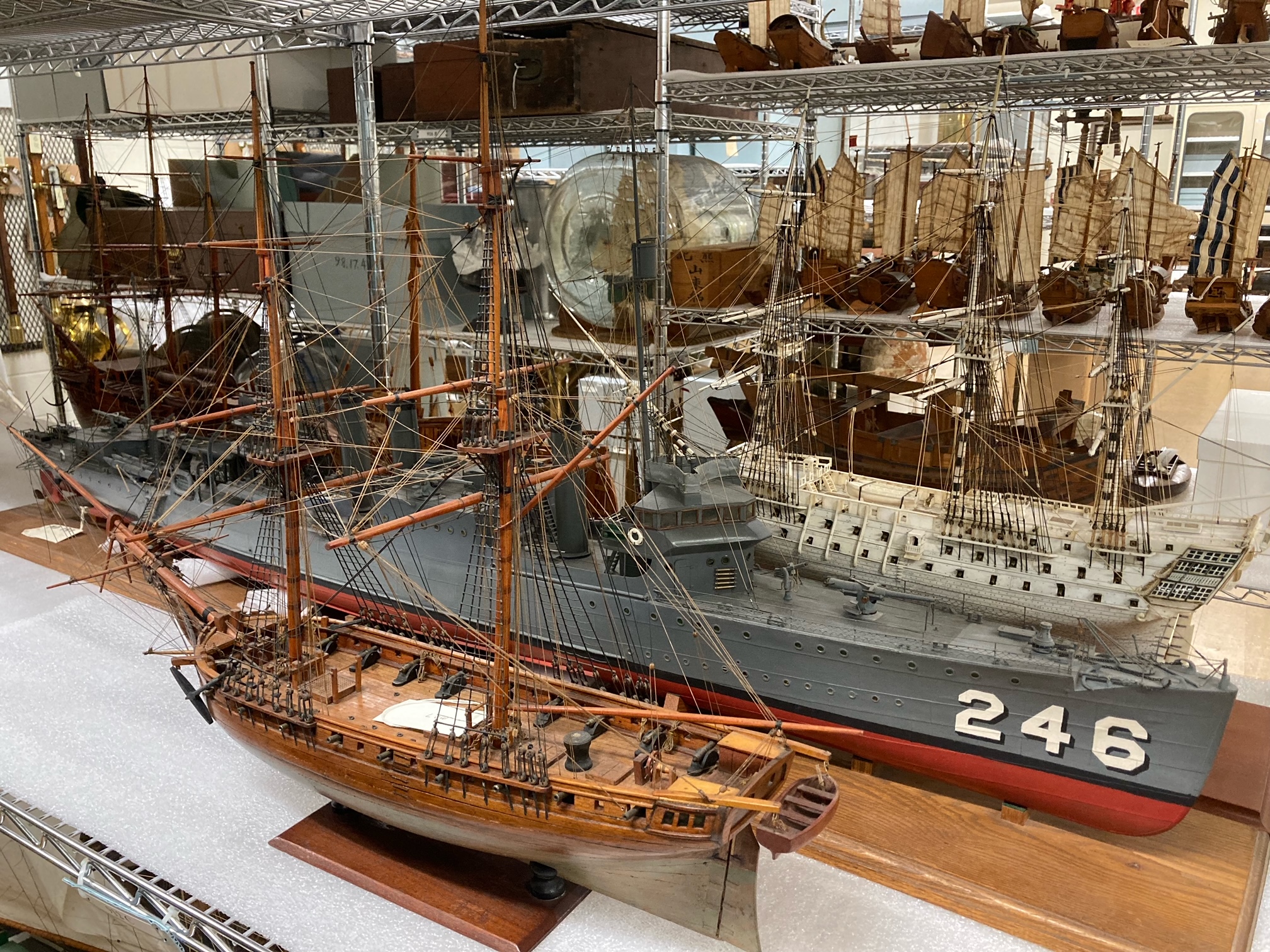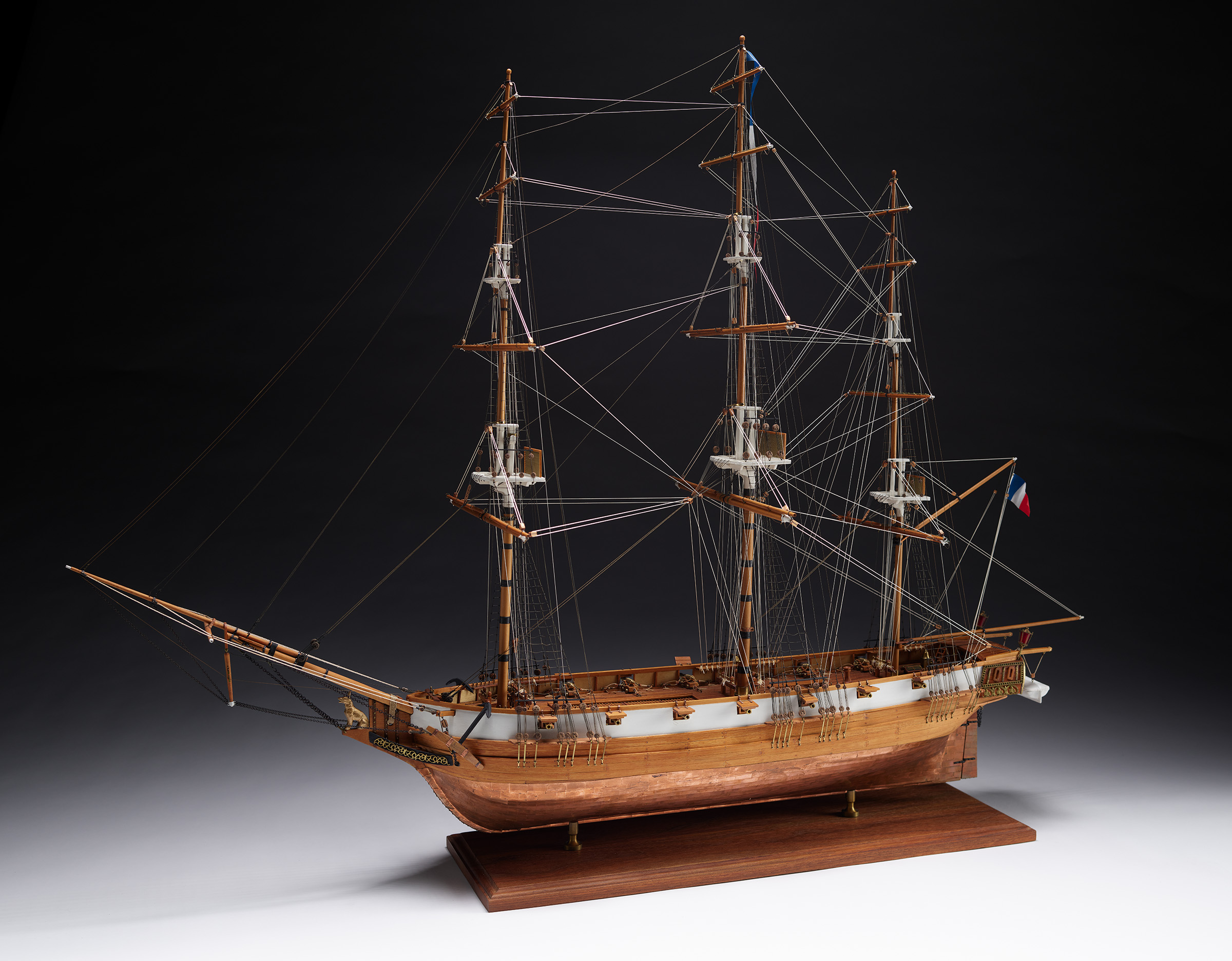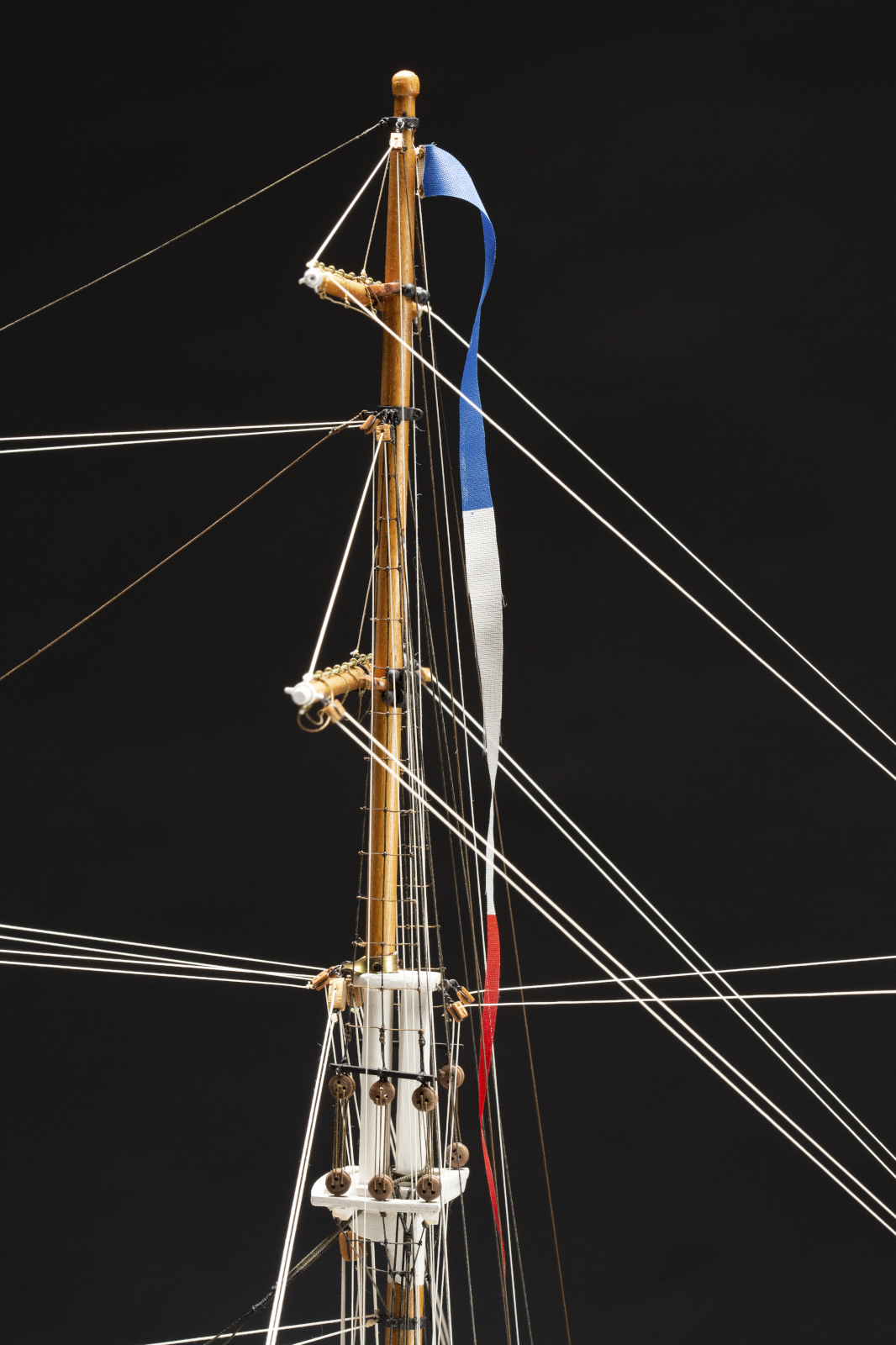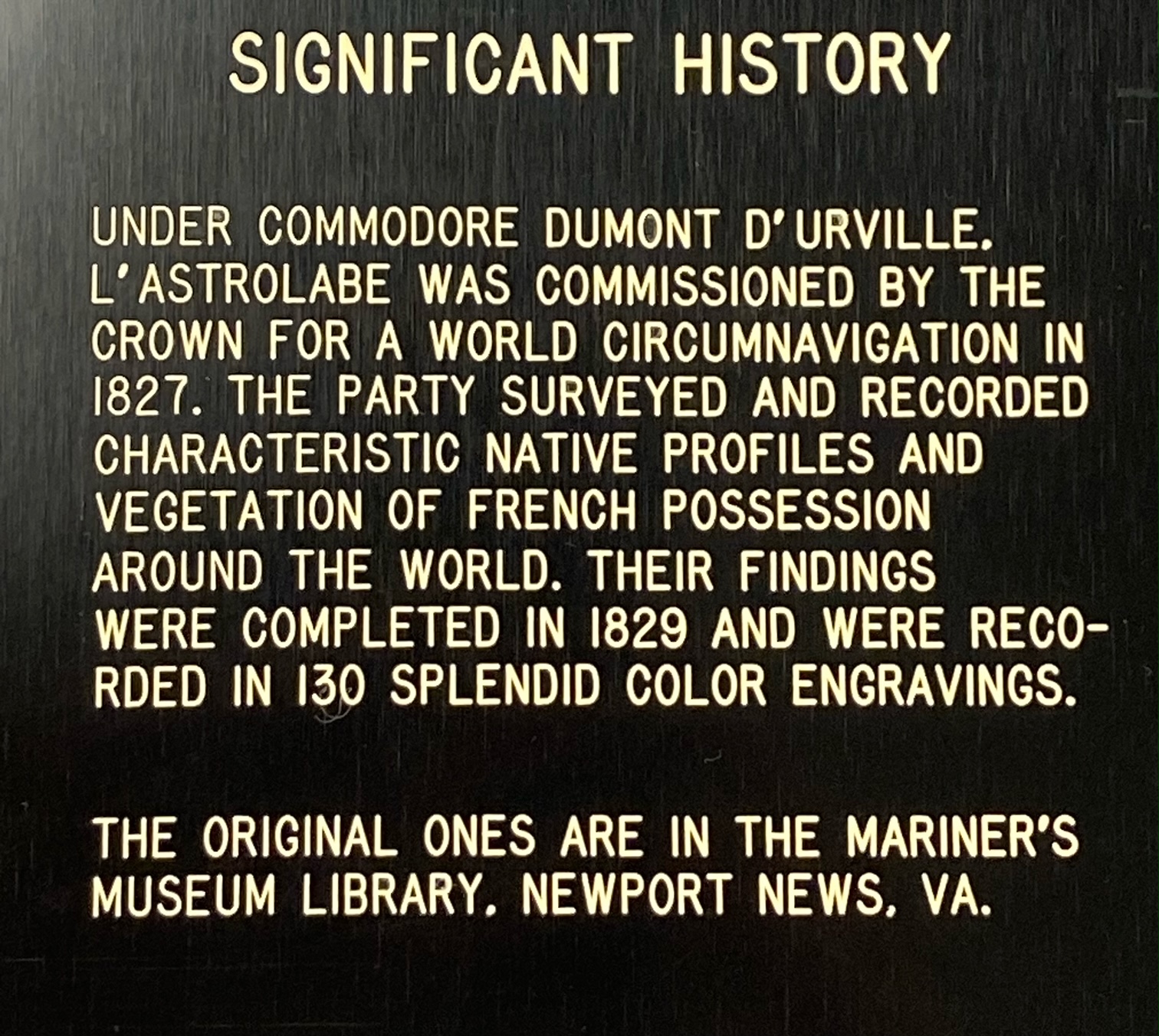We routinely have people contact The Mariners’ Museum and Park to offer to donate objects into our Collection. For that, we are grateful for the opportunities to expand our abilities to tell the maritime stories that connect all of us, especially with the nuance of family history that makes every single donation unique.
Each of those objects, documents, or books, go before the Collections Committee, a group that meets once a month to navigate the decisions in accepting new donations. We must consider the story we can tell with the new donation, the condition and work required to treat it, and if we already have something like it in the Collection. There is a lot of work involved, and we take each acquisition recommendation seriously.
One of the best parts of my position here is that I get to see all of the new objects as they come in. A recent acquisition was especially exciting, because there are so many wonderful stories to tell within this single object!
SHIP MODEL L’ASTROLABE
We have over 2,000 ship models in our Collection, so when we accept one it has to be something special. The l’Astrolabe is certainly that, a gorgeous model built by Dr. F. Bradley Gray approximately 50 years ago.
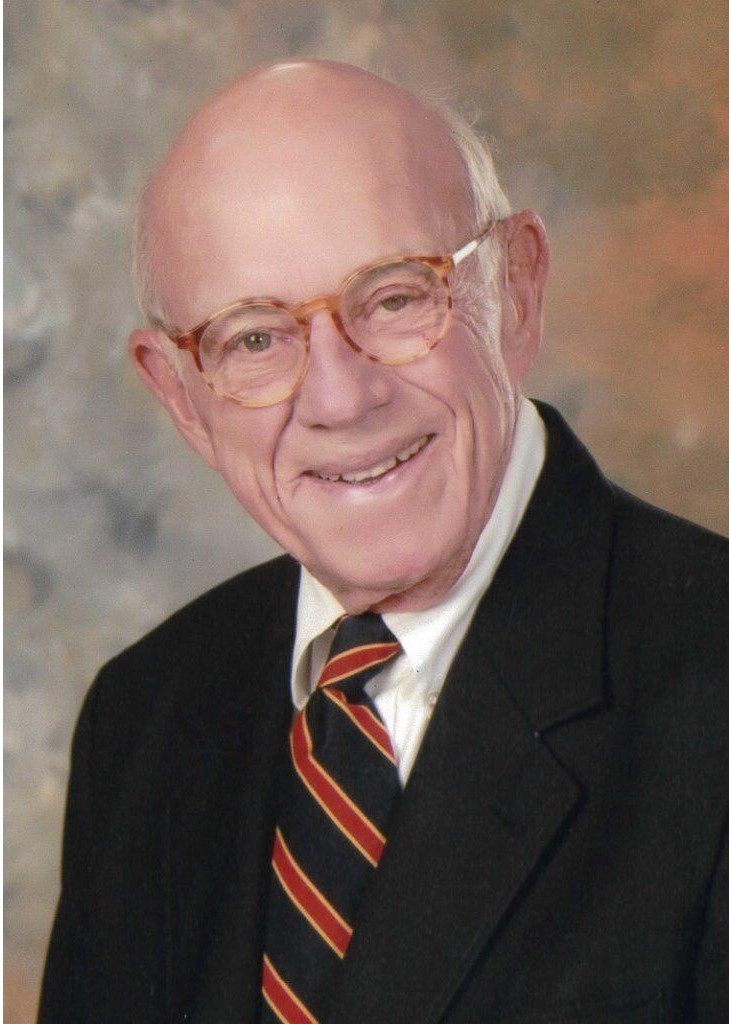
Dr. Gray was born June 17, 1936 in Newport News, Virginia. His wife, Weezie, described how he loved coming to The Mariners’ Museum and Park, and grew up just a few miles away. Dr. Gray became a urologist, and also served the community through his time in the US Army. He loved sailing, and joined the Hampton Roads Ship Model Society to reconnect with the Museum. When he made this model, Mrs. Gray described how he used surgical thread for the rigging. No one can separate the various parts of themselves, so it’s no surprise that Dr. Gray merged his profession and his model. Truly, he brought a piece of himself to his art!
THE FIRST CIRCUMNAVIGATION
The l’Astrolabe began life in 1811 named Coquille. By 1822, the French had converted the ship for exploration and sent it out under the command of Louis Isidore Duperry. The British newspaper, Morning Post, reported on September 17, 1822 that Coquille left Toulons after several months of fitting out. The paper reported, “She is about to undertake a voyage, from which results interesting to the progress of geography and physical science may be expected.” The author went on to say, “No means which could assure the success of this expedition have been neglected.”
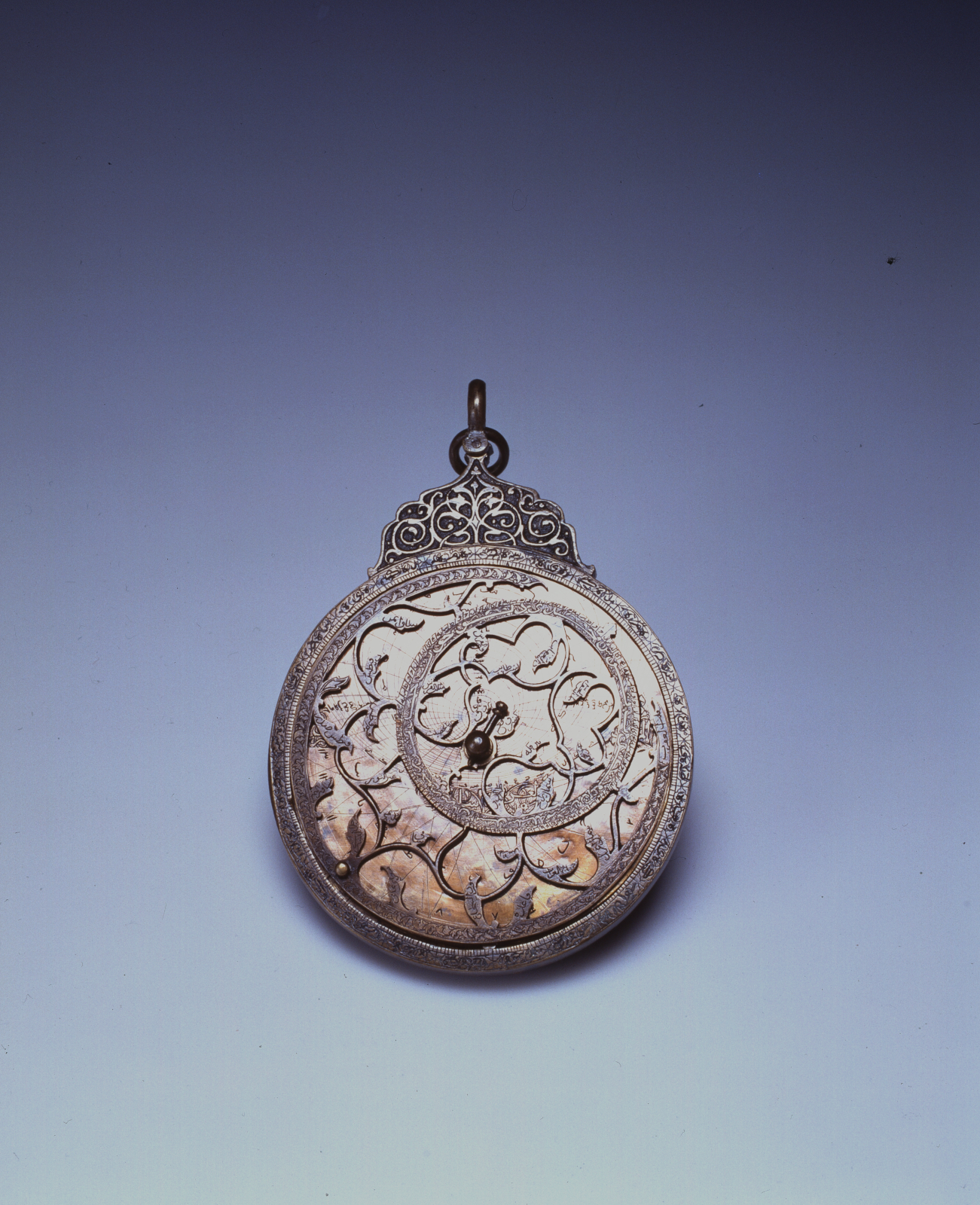
On April 4, 1825 The Star (London) reported Coquille had returned home on March 24, “after circumnavigating the globe. Her voyage occupied 34 months, during which she sustained no damage, lost no hands, and even had no sick on board.” In an age of less than adequate medical science, that seems like a resounding success to me!
THE SECOND CIRCUMNAVIGATION
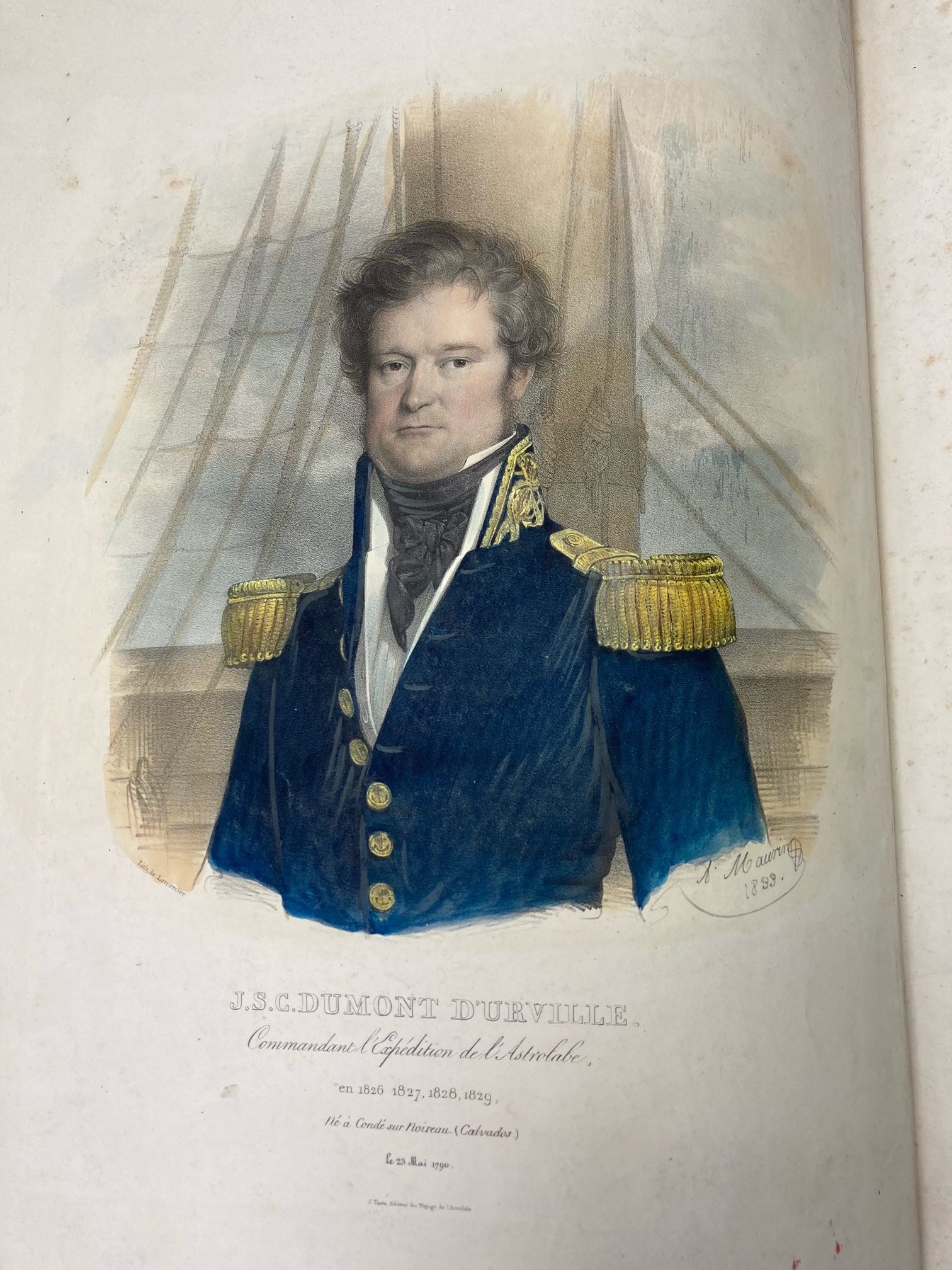
Now the fun part starts: Dr. Gray’s model shows l’Astrolabe as the ship appeared during the second circumnavigation of the world, from 1826 to 1829. London’s The New Times reported on January 20, 1826 that King Charles X of France had ordered a new expedition of discovery in November 1825. The same ship, now renamed l’Astrolabe, would have a celebrated crew commanded by Captain J. d’Urville who had sailed with Duperry on that first circumnavigation.
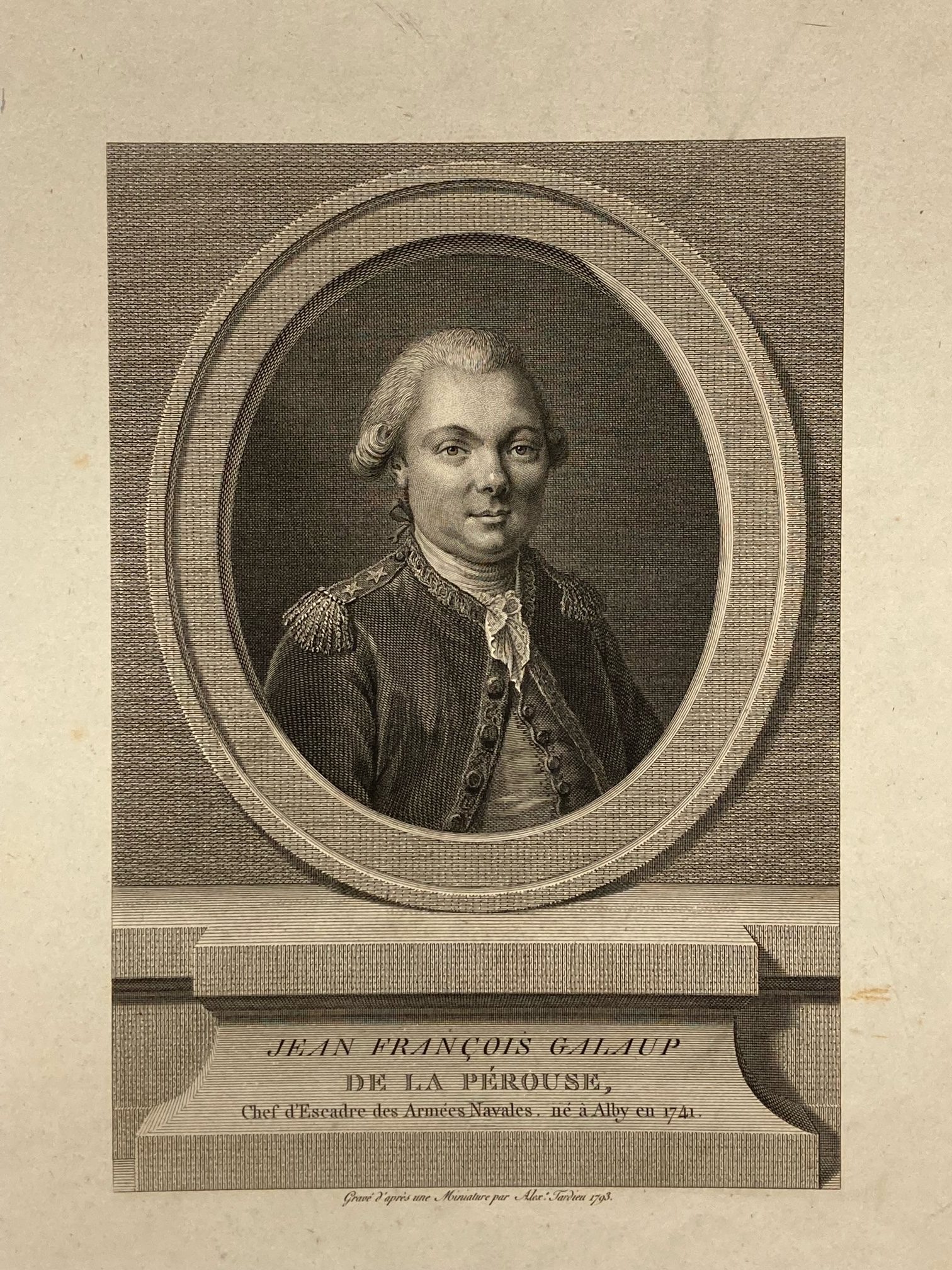
The paper reported, “The particular object of the voyage is to explore more accurately several of the islands in the Pacific, and especially those among the shoals of which it is presumed that the unfortunate Perouse perished.”
As this second expedition proceeded, d’Urville sent home letters when he could. Most of the European voyagers at the time did this, and the papers eventually made their way home where people ate it up. How exciting it must have been to read about new areas of the world! This also fed the market for published accounts of the expeditions.
EXPEDITIONS FOR SCIENTIFIC AND FINANCIAL GAIN
There are many books in our Library that detail trips around the world. If the trip itself wasn’t a financial success, publishing the tales of the trip was a secondary path to financial gain. Why go on these amazing, daring adventures if you were going to keep the information to yourself and possibly die poor? Tell the world how brave and successful you are, and rake in the money and glory! At least, that’s how I imagine the captains’ thoughts on the subject.


This second circumnavigation was no different: within a year the advertisements had started for the publication about the expedition. As with most books about explorations it had an appropriately long title, the English translation is The Voyage of the Corvette l’Astrolabe, Executed During the Years 1826-1827-1828-1829 Under the Command of Jules Dumont d’Urville. Who needs additional text when all of the details are in the title?
I am not shy at all in saying that the Collection at The Mariners’ Museum and Park is AMAZING. And of course, we have the publication in our Library. What makes this even better is that Dr. Gray used the books to research when he built the model. Talk about never-ending connections!
The publication is two volumes of gorgeous hand-colored prints showing the places, people, and plantlife the crew met along the way. The companion to that is five volumes of text that tell the stories of their visits to areas such as New Zealand, Fiji, and the Solomon Islands. So I was wrong, a long title clearly does not tell all of the stories from a circumnavigation of Earth in the 1820s.
THIRD CIRCUMNAVIGATION
l’Astrolabe sailed on a third circumnavigation of the world from 1837-1840, with Captain d’Urville racing with other European powers to reach as far south as possible. France celebrated the captain, and the French Navy promoted him to Rear Admiral upon his return in 1840. As with the second circumnavigation, d’Urville published an account of this voyage which is also in our Library.
Sadly, in 1842 d’Urville and his family attended a celebration for the king at Versailles, and were on the train home to Paris when the engine’s axle broke, the train cars behind slammed into it and a large fire broke out. An unknown number of people died, including Captain d’Urville, his wife, and their 14 year old son.
The papers reported, “M. Dumont d’Urville, who had commanded two expeditions of circumnavigation, and braved so many dangers during a career of more than 35 years, was aged only 51 years and a few months.”
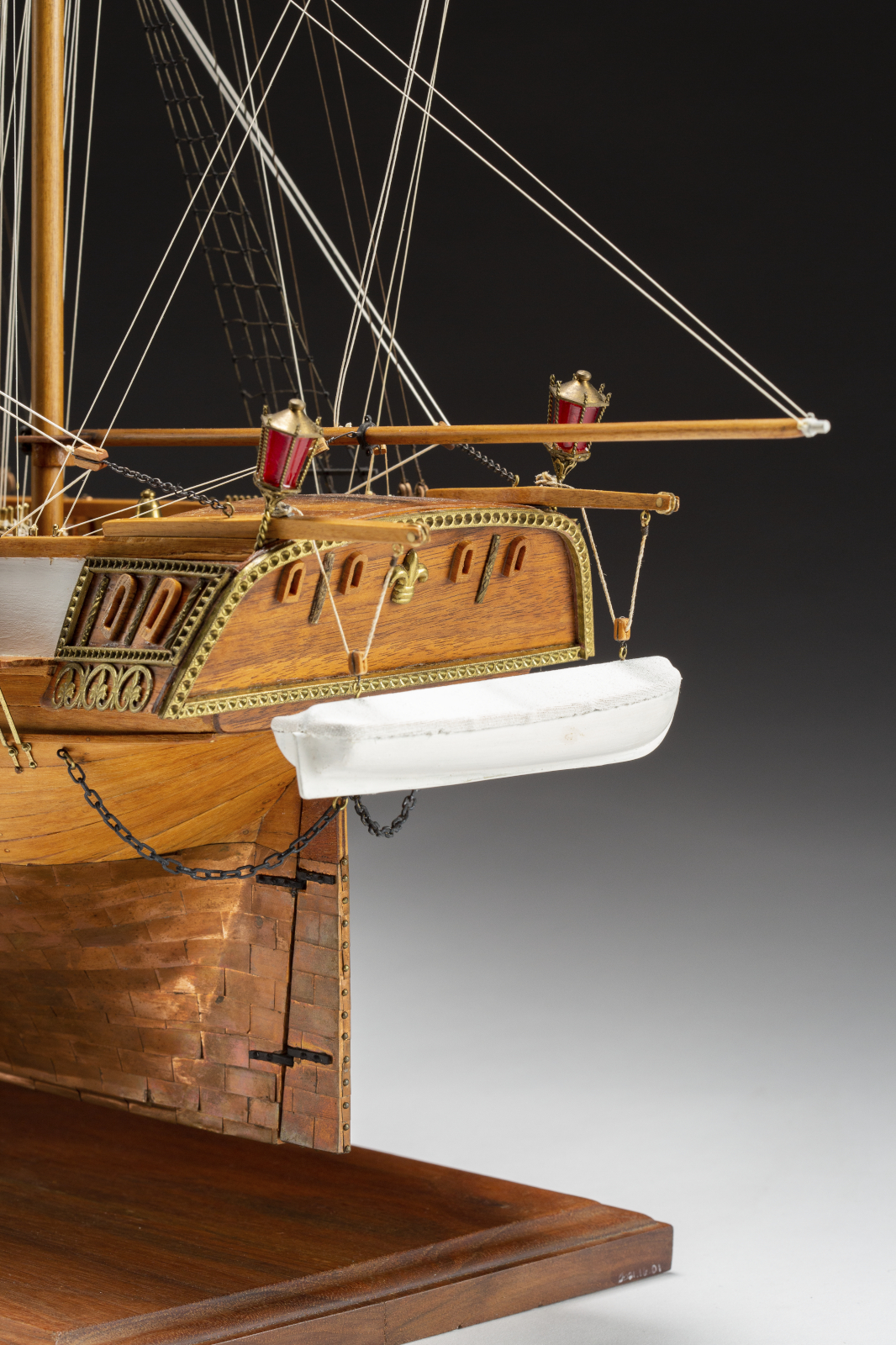
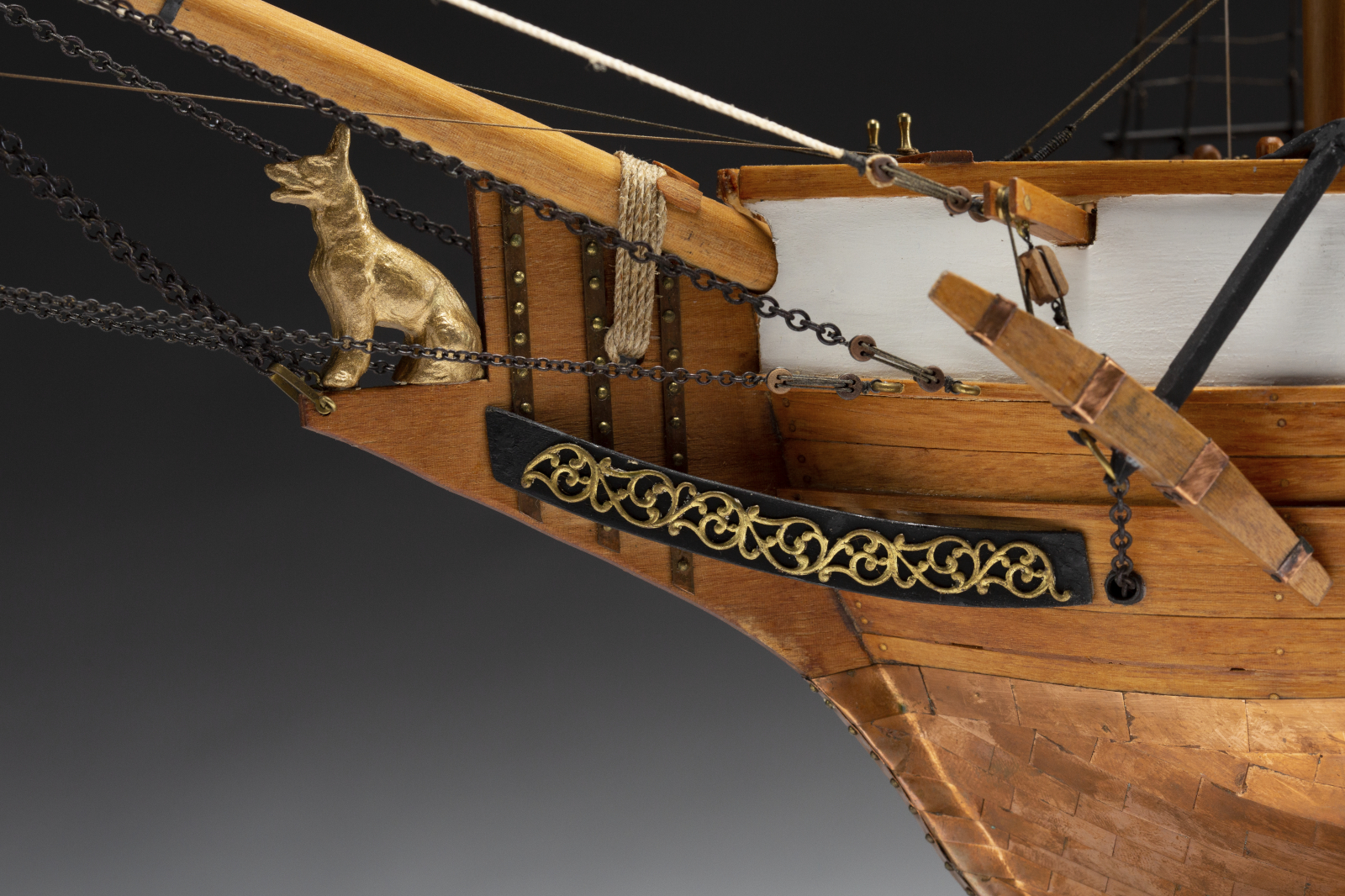
I absolutely love this model, partially because it is gorgeous, but also because Mrs. Gray has been so incredibly kind and wonderful. Her stories of Dr. Gray’s childhood connection and happy memories at the Museum give this model extra meaning. His connections to the water through the Museum, and therefore to all of us, are a tiny example of our mission: through the waters, through our shared maritime heritage, we are connected to one another.
